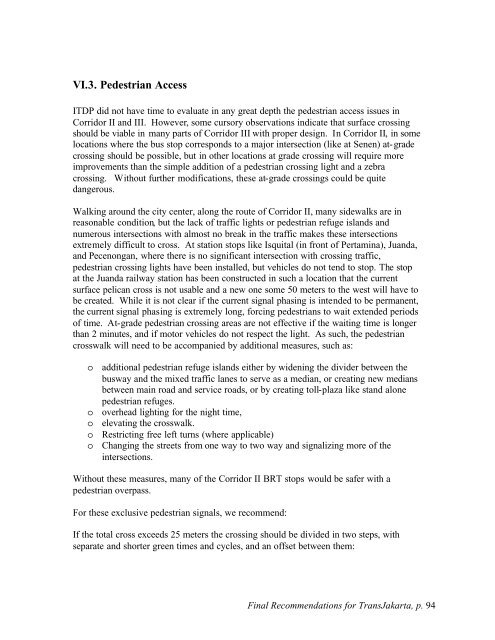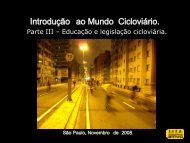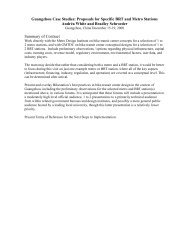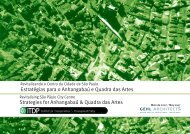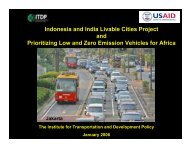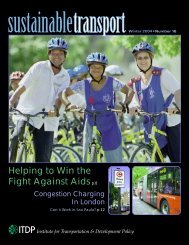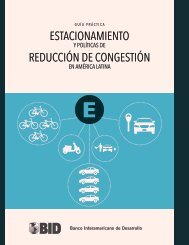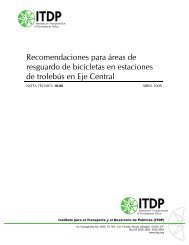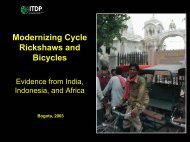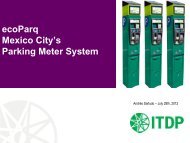Making TransJakarta a World Class BRT System - ITDP | Institute for ...
Making TransJakarta a World Class BRT System - ITDP | Institute for ...
Making TransJakarta a World Class BRT System - ITDP | Institute for ...
Create successful ePaper yourself
Turn your PDF publications into a flip-book with our unique Google optimized e-Paper software.
VI.3. Pedestrian Access<br />
<strong>ITDP</strong> did not have time to evaluate in any great depth the pedestrian access issues in<br />
Corridor II and III. However, some cursory observations indicate that surface crossing<br />
should be viable in many parts of Corridor III with proper design. In Corridor II, in some<br />
locations where the bus stop corresponds to a major intersection (like at Senen) at-grade<br />
crossing should be possible, but in other locations at grade crossing will require more<br />
improvements than the simple addition of a pedestrian crossing light and a zebra<br />
crossing. Without further modifications, these at-grade crossings could be quite<br />
dangerous.<br />
Walking around the city center, along the route of Corridor II, many sidewalks are in<br />
reasonable condition, but the lack of traffic lights or pedestrian refuge islands and<br />
numerous intersections with almost no break in the traffic makes these intersections<br />
extremely difficult to cross. At station stops like Isquital (in front of Pertamina), Juanda,<br />
and Pecenongan, where there is no significant intersection with crossing traffic,<br />
pedestrian crossing lights have been installed, but vehicles do not tend to stop. The stop<br />
at the Juanda railway station has been constructed in such a location that the current<br />
surface pelican cross is not usable and a new one some 50 meters to the west will have to<br />
be created. While it is not clear if the current signal phasing is intended to be permanent,<br />
the current signal phasing is extremely long, <strong>for</strong>cing pedestrians to wait extended periods<br />
of time. At-grade pedestrian crossing areas are not effective if the waiting time is longer<br />
than 2 minutes, and if motor vehicles do not respect the light. As such, the pedestrian<br />
crosswalk will need to be accompanied by additional measures, such as:<br />
o additional pedestrian refuge islands either by widening the divider between the<br />
busway and the mixed traffic lanes to serve as a median, or creating new medians<br />
between main road and service roads, or by creating toll-plaza like stand alone<br />
pedestrian refuges.<br />
o overhead lighting <strong>for</strong> the night time,<br />
o elevating the crosswalk.<br />
o Restricting free left turns (where applicable)<br />
o Changing the streets from one way to two way and signalizing more of the<br />
intersections.<br />
Without these measures, many of the Corridor II <strong>BRT</strong> stops would be safer with a<br />
pedestrian overpass.<br />
For these exclusive pedestrian signals, we recommend:<br />
If the total cross exceeds 25 meters the crossing should be divided in two steps, with<br />
separate and shorter green times and cycles, and an offset between them:<br />
Final Recommendations <strong>for</strong> <strong>TransJakarta</strong>, p. 94


